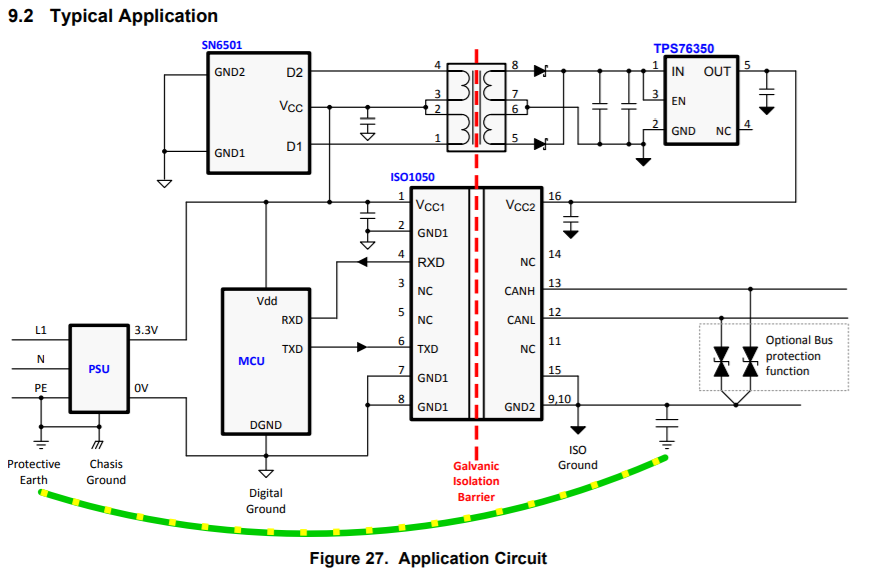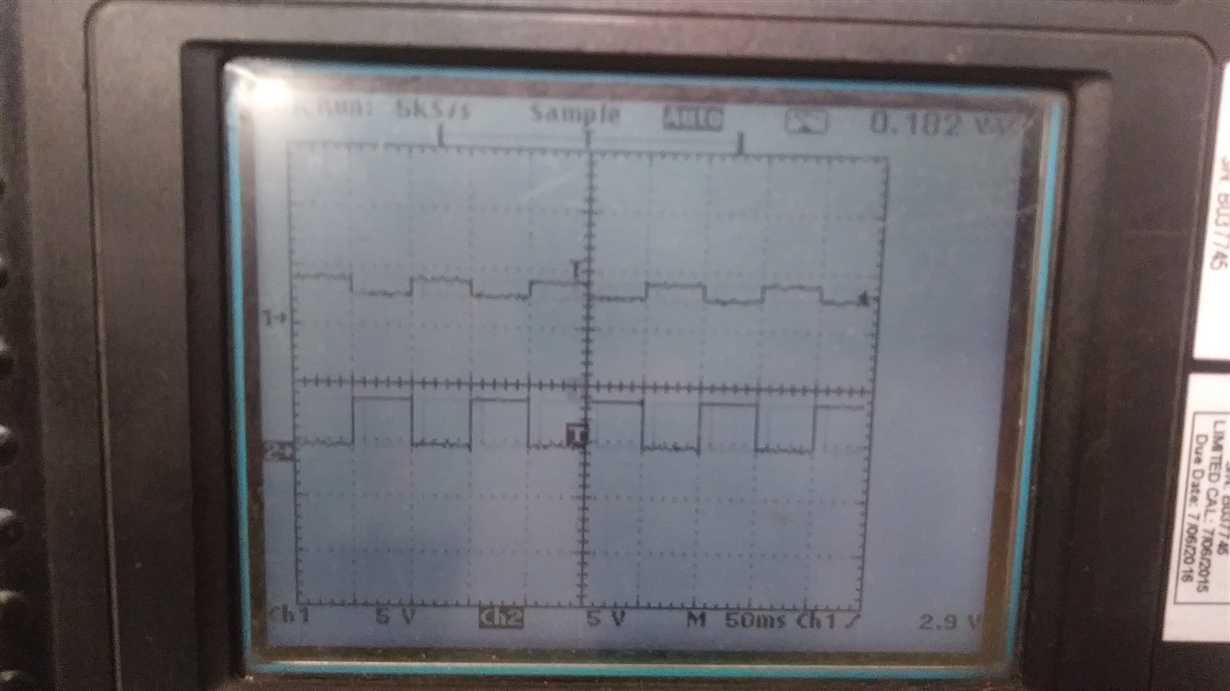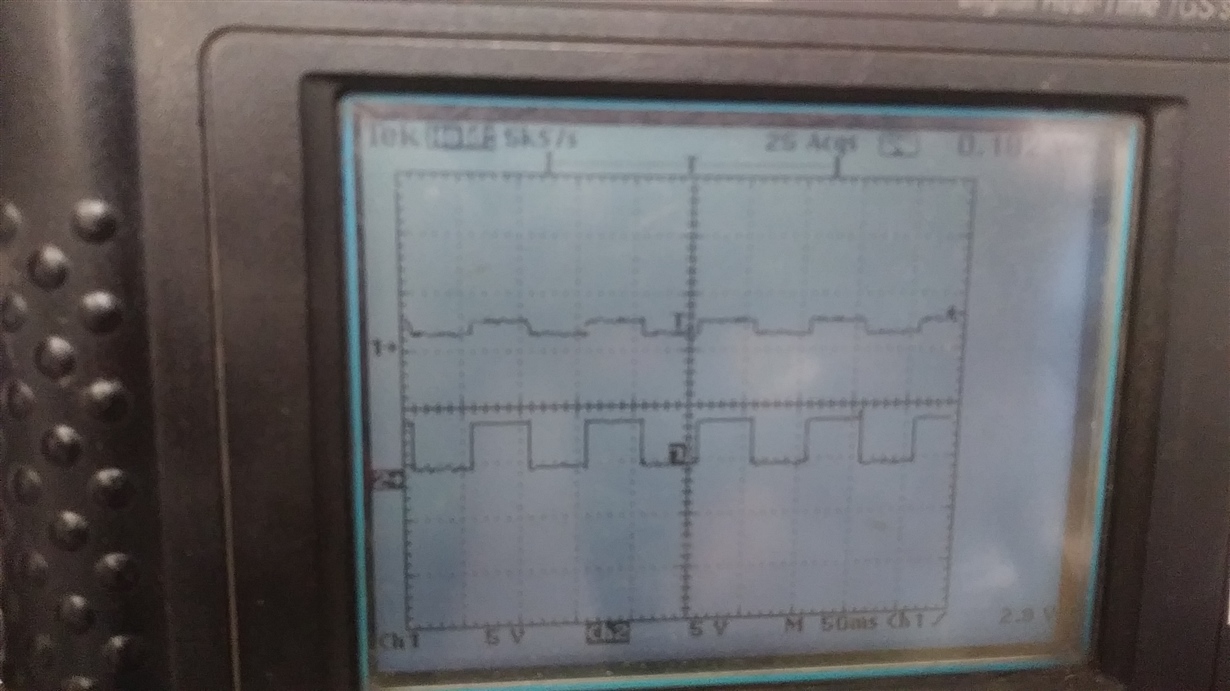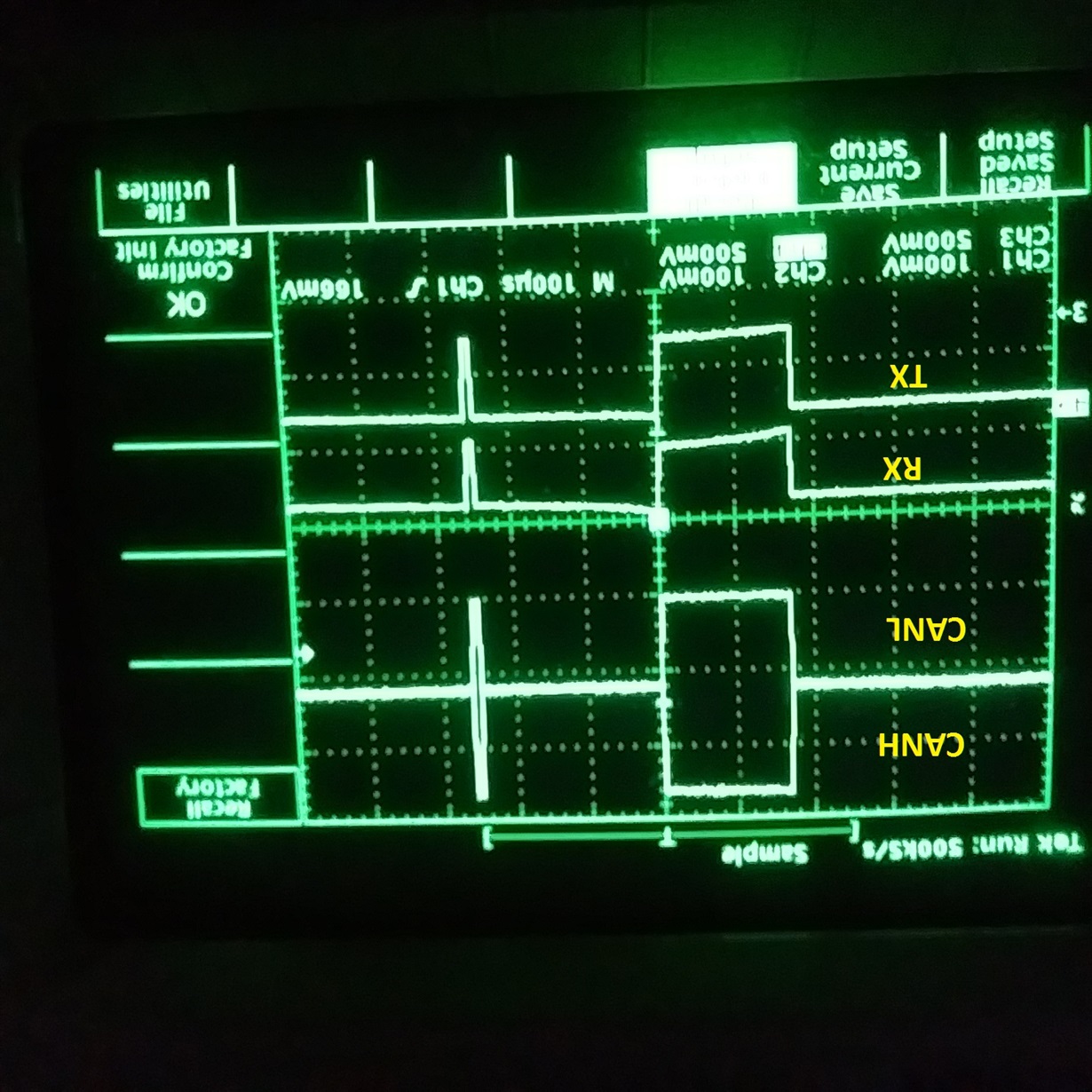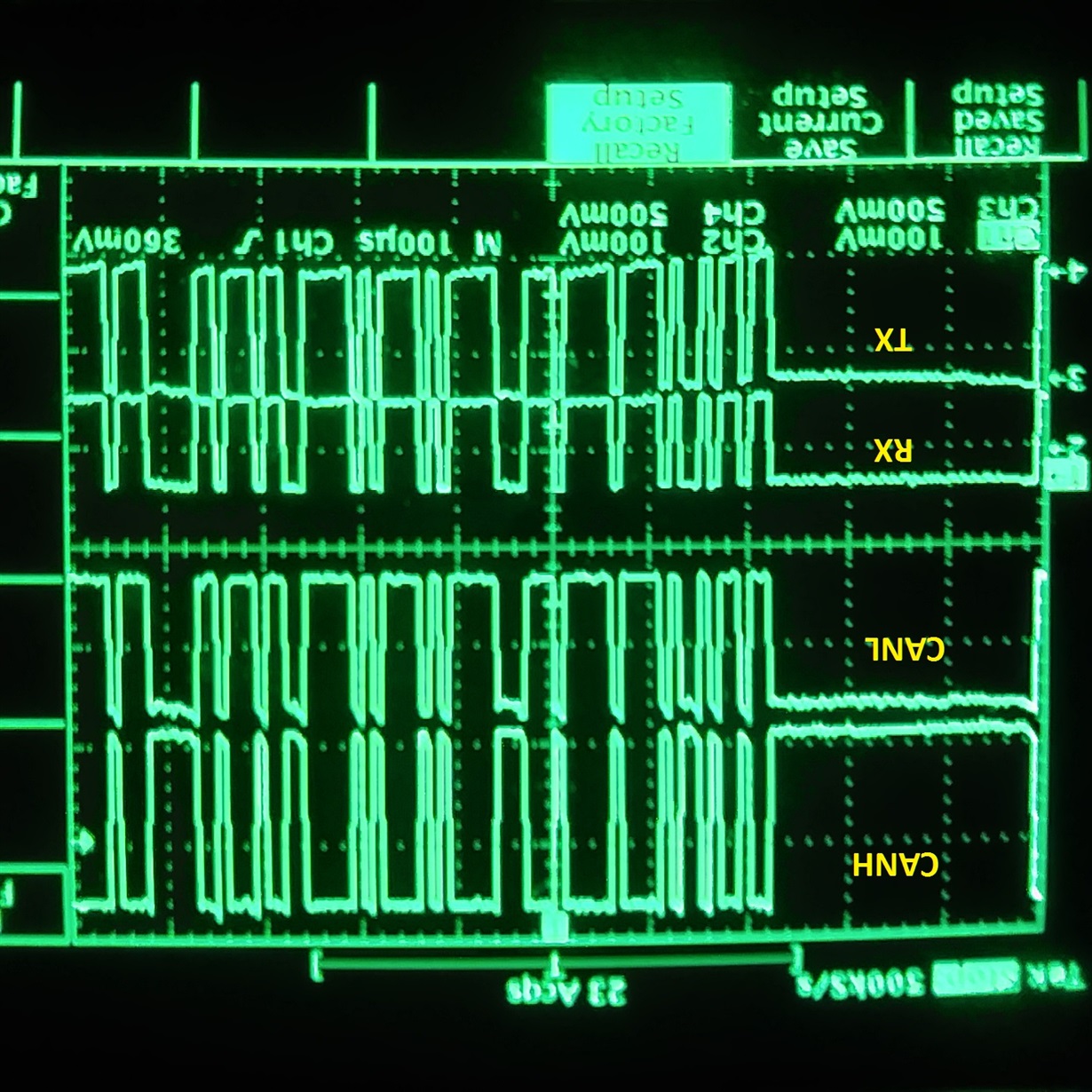Other Parts Discussed in Thread: SN65HVD1050, SN65HVD251
I created a design using the iso1050 dub can transciever. I designed exactly as shown in the datasheet. I can't get any meaningful signal out of it. Occasionally I'll get a few square waves but most of the signal is noise. It's not a board design problem because I (through great effort) replaced the iso1050 with an SN65HV transciever and everything worked fine. Any help would be appreciated.


